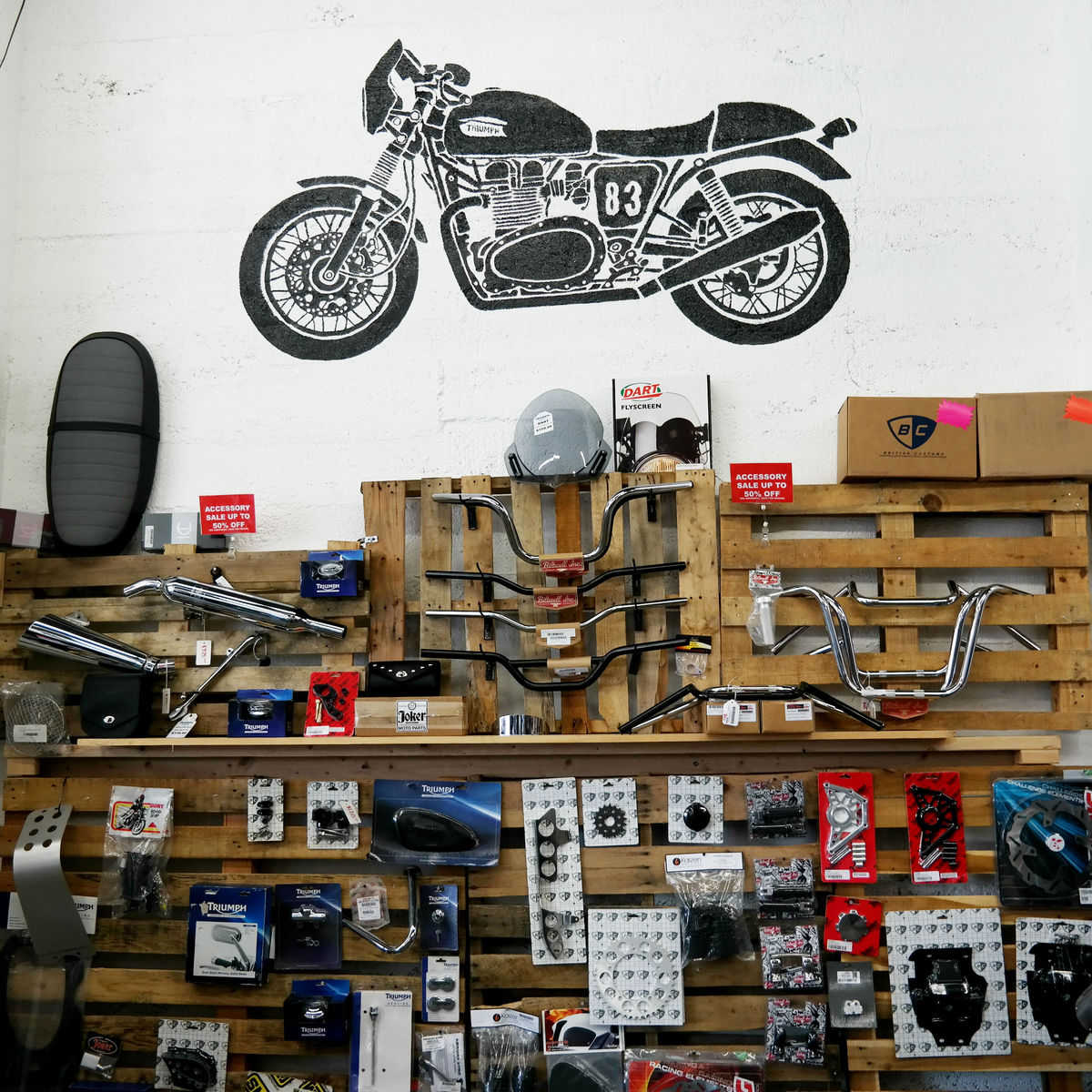An In-depth Check Out Motorcycle Components: What Every Motorcyclist Must Know
An extensive understanding of bike components is not just useful yet essential for any kind of biker intending to optimize efficiency and security. Each element, from the engine's complex functions to the reliability of brake systems, plays an essential duty in the total experience and functionality of the bike.
Understanding the Engine
The engine, usually considered the heart of a bike, is an intricate assembly of elements that function in harmony to transform gas right into activity. At its core, the engine's main feature entails the burning process, where air and gas mix and spark within the cyndrical tubes, causing regulated surges that drive the pistons. These pistons go up and down, converting chemical energy into mechanical power, which consequently turns the crankshaft, ultimately powering the bike.

Recognizing the details of a motorbike engine is vital for motorcyclists and lovers alike. It not just provides understanding right into just how bikes accomplish their remarkable power and speed but likewise help in effective upkeep and troubleshooting, making certain longevity and dependability when traveling.
Suspension Systems
While the engine powers the bike, the shock absorber plays an essential duty in making certain a smooth and regulated experience. The shock absorber is in charge of absorbing shocks from the roadway surface area, maintaining tire contact, and offering security during cornering and stopping. It comprises two major elements: the front forks and the rear shock absorbers.
Front forks are generally telescopic, dampening and having a spring system. The springtime compresses and expands to absorb bumps, while the moistening system controls the activity to avoid extreme bouncing. This combination ensures the front wheel stays touching the roadway, offering remarkable handling and convenience.
The rear suspension, normally a monoshock or twin-shock arrangement, functions in a similar way to the front suspension but is customized to support the motorcycle's weight and biker - motorcycle parts nz. It handles back wheel movement, adding to the bike's total equilibrium and responsiveness
Shock absorber can be flexible, allowing riders to fine-tune preload, compression, and rebound setups according to individual choices and riding problems. This adjustability improves efficiency by optimizing the motorcycle's interaction with varied terrains. In summary, a reliable suspension system is critical for cyclist comfort, security, and the motorbike's dealing with expertise.
Brake Elements
Stopping power is a fundamental facet of motorbike security, and it depends upon the effectiveness of the brake components. The primary elements of a bike's braking system consist of the brake pads, calipers, rotors, and master cylinder. motox parts nz. Each of these elements plays an important function in guaranteeing effective stopping performance
Brake pads are necessary as they produce the required rubbing against the blades to reduce or stop the motorbike. Constructed from products such as sintered steel heated motorcycle jacket or natural compounds, the option of brake pad material substantially impacts efficiency and long life. Calipers, housing the brake pads, apply stress to the pads when the brake lever is involved, facilitating call with the rotors.
The blades, generally made from stainless-steel or cast iron, are placed to the wheels and offer as the surface area versus which the brake pads press. Their layout, consisting of size and thickness, influences heat dissipation and quiting power. The master cyndrical tube, attached to the brake bar, produces hydraulic stress transmitted through brake lines to the calipers, ensuring constant stopping pressure.
Regular maintenance and inspection of these parts are important for ideal performance, protecting against wear and making certain motorcyclist safety when driving.
Tire Basics
Beyond preserving robust braking systems, making sure optimum tire performance is equally considerable for motorbike security and effectiveness. Tires are the sole get in touch with factor between the road and the motorbike, making go their condition critical in managing, stability, and general trip high quality.

In addition, consider the tire's age. Rubber compounds degrade over time, also if tread shows up ample. Check the sidewall for the DOT (Division of Transport) code to identify the tire's age. Normally, replacement is advised every 5 years, despite wear. Investing attention in these tire essentials not only optimizes efficiency but also substantially boosts riding safety and security.
Electrical Solutions
In the world of motorcycle maintenance, the electric system plays a critical function in making sure trusted performance and rider security. This detailed network incorporates necessary parts such as the battery, generator, starter electric motor, and circuitry harness. Each aspect is vital for the seamless procedure of the bike, from ignition to lights and interaction with various sensors.
The battery functions as the heart of the electrical system, supplying the essential power to start the engine and run devices. Consistently inspecting the battery's voltage and terminals for corrosion is essential to avoid unanticipated failings. The alternator, on the other hand, charges the battery while the engine is running, guaranteeing a constant power supply.
To keep it, bikers must pay focus to any kind of uncommon noises or troubles throughout start-up. Guaranteeing that the cables are intact and complimentary from damage is crucial for preventing brief circuits and ensuring functionality.
Verdict

Quiting power is an essential element of motorcycle security, and it hinges on the effectiveness of the brake components. The key elements of a bike's stopping system consist of the brake pads, calipers, blades, and master cyndrical tube.Brake pads are necessary as they produce the required friction against the blades to reduce down or quit the motorbike.Beyond maintaining robust stopping systems, ensuring optimal tire efficiency is just as considerable for motorcycle safety and security and effectiveness.In the realm of bike maintenance, the electrical system plays a critical function in making certain trusted performance and cyclist safety and security.